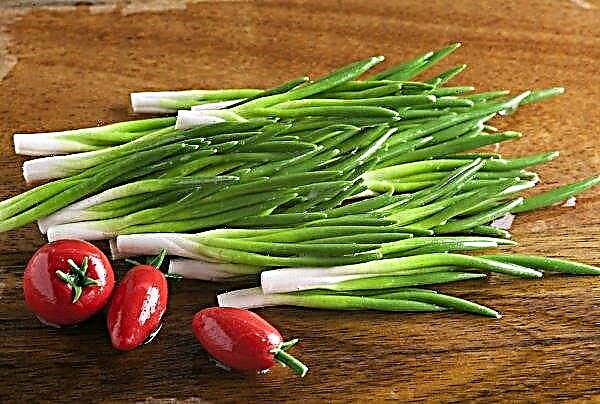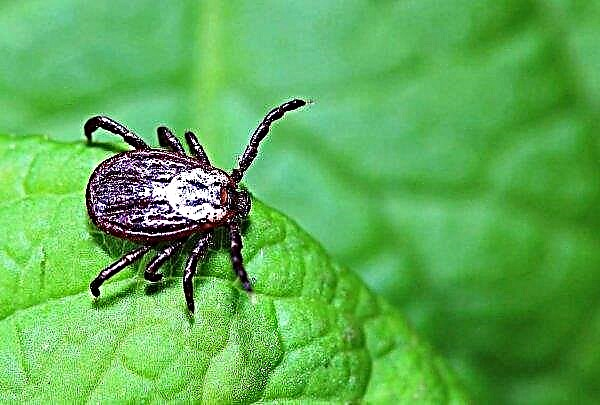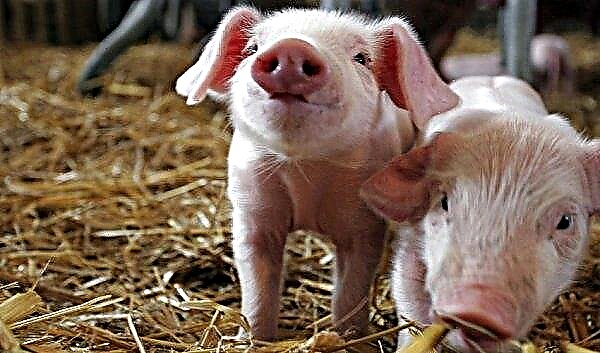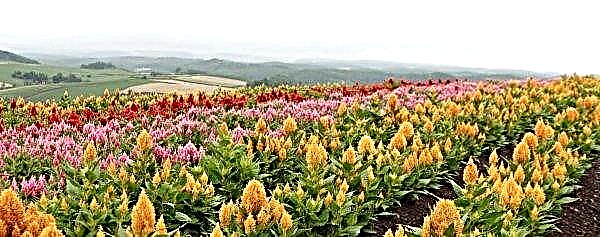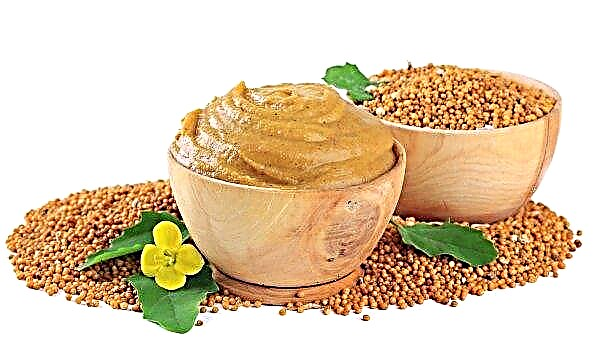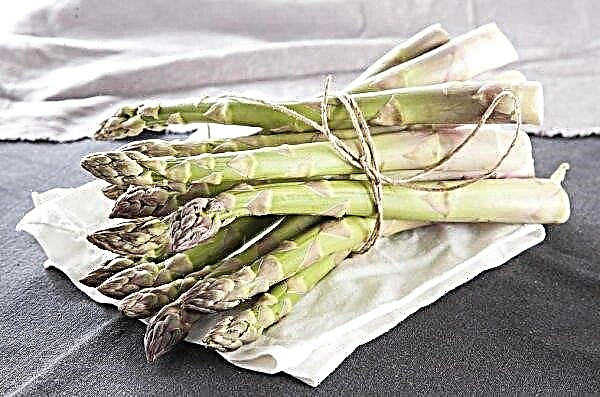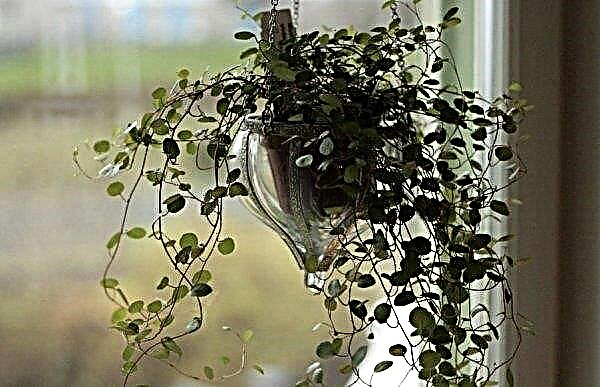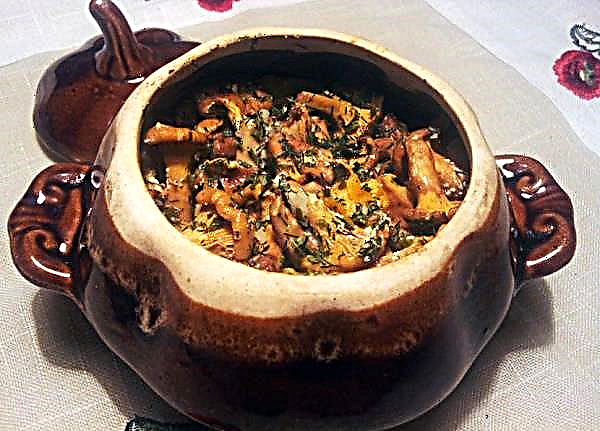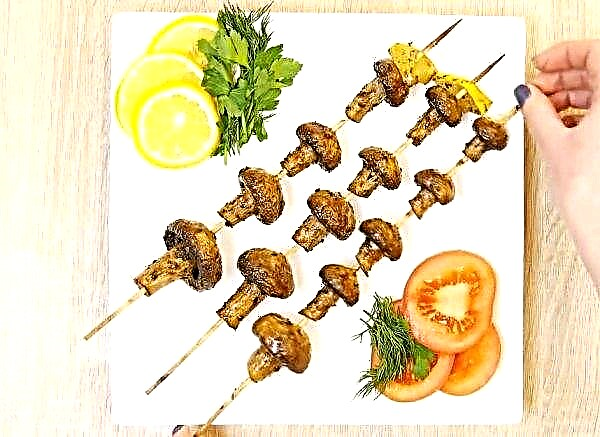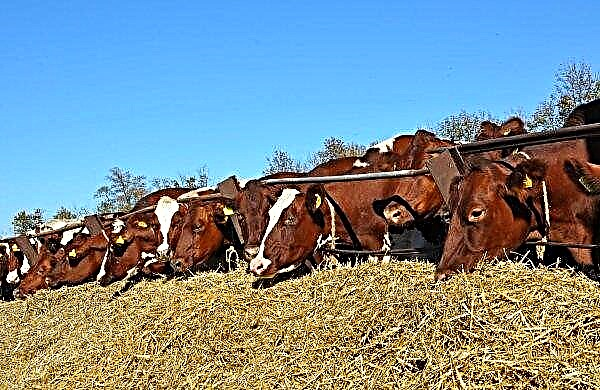Popcorn is one of the most beloved products of not only children, but also many adults. Let's find out how to grow corn for popcorn on your own, what varieties are suitable for this, and how to care for them.
Varieties of Corn for Popcorn
Not all corn varieties are suitable for making popcorn. When heated, such grains should open, and not just burst, like ordinary corn, therefore only those varieties are suitable whose grains contain little starch and, accordingly, have a thinner shell. When frying, the moisture inside them expands and at the time of bursting, the steam that forms exudes the pulp of the grains. Information on the best varieties of corn for popcorn is presented below.
Did you know? Corn is the only one among all plants whose fruits contain gold. By the way, this valuable trace element has a beneficial effect on the activity of the brain.
Hotel
The main characteristics of the variety:
- ripening: early (80 days);
- plant height: 2–2.2 m;
- ear length: 20–23 cm;
- grains: yellow, medium;
- resistance to drought and lodging: high;
- suitable for hot, arid places.

Zeya
The main characteristics of the variety:
- ripening: early (80 days);
- plant height: up to 1.8 m;
- ear length: 18–20 cm;
- grains: burgundy or dark red, wide, pointed tip.

Ping pong
The main characteristics of the variety:
- ripening: medium-early (100-110 days);
- plant height: 1.8–2 m;
- ear length: 12-15 cm;
- Grains: small, yellow.

Red popcorn
The main characteristics of the variety:
- ripening: early (80 days);
- plant height: 1–1.2 m;
- ear length: up to 15 cm;
- Grains: small, neat, shade of mahogany;
- palatability: excellent;
- high decorative, used in flower arrangements.

Pop-pop
The main characteristics of the variety:
- ripening: medium-early (85–90 days);
- plant height: 1.5–1.7 m;
- ear length: 18–21 cm;
- grains: yellow, wide, elongated;
- productivity: high.

Vnuchkina joy
The main characteristics of the variety:
- ripening: early (80 days);
- plant height: up to 1.6 m;
- ear length: 10-12 cm;
- grains: pale orange;
- productivity: high;
- drought tolerance: low;
- disease resistance: good;
- requires well-fertilized soil.

Volcano
The main characteristics of the variety:
- ripening: medium-early (85–90 days);
- plant height: up to 2 m;
- ear length: 20–22 cm;
- grains: yellow, oval, rice-shaped;
- drought tolerance: high;
- resistant to cold and disease.

Growing corn
Although popcorn corn is sold in almost all stores, it is much nicer and cheaper to grow it yourself. Moreover, it is quite simple, you should only observe some conditions.
Did you know? Corn grains contain a large amount of fiber, which improves the digestive system and lowers blood cholesterol.
Landing
The culture is planted in well-heated soil, so the timing of its planting depends on the climate of the area. This usually happens in May. Since all varieties of popcorn love heat, they are grown in the steppe and forest-steppe climatic zones. Such territories are often distinguished by strong winds; therefore, to prevent lodging of plants, they should be planted on any type of soil, except for sandy and loose ones. Since the culture does not tolerate excessive humidity, it is also better to refuse to plant it in lowlands on alumina.
There are several more features of popcorn growing:
- do not plant culture in one place for two years in a row;
- good predecessors of corn - tomatoes, potatoes, beets, carrots and other root crops;
- yields planted in 1 row of crops will be quite low;
- the optimal number of plant rows is 4–5;
- the root system is strongly suppressed by weeds, weeding is mandatory.
2-3 corn grains are planted in the hole to a depth of 2-3 cm. The next hole is placed at a distance of 50 cm from the previous one, the pitch between the rows should be about 50 cm. Depending on the manufacturer's recommendations, planting patterns of 40x60 cm and 30x70 cm are allowed. seedlings of the plant can be expected after 10-12 days.Important! Unnecessary pollination will prevent the planting of corn on popcorn as far as possible from sugar corn.
Cob Care
Care of the crop consists in watering, top-dressing and weeding. The frequency of watering depends on the climate, usually 1-2 waterings per week are enough for plants. Watering should only be under the root. High crop yields are not possible without fertilizers. 3-4 weeks after emergence in the phase of 5-6 leaves, organic fertilizers or liquid urea should be applied. Before the appearance of “panicles”, corn is fed with nitrophos or azophos, and during the formation of ears, potassium and nitrogen. One of the main enemies of culture is weeds, which consume a lot of plant resources and weaken its root system, so the plot cannot be overgrown. Weeding in rows and between them should be about 3-4 times during the growing season. If pests annoy the plants, then special means from stores for gardeners and gardeners will help to combat them.
One of the main enemies of culture is weeds, which consume a lot of plant resources and weaken its root system, so the plot cannot be overgrown. Weeding in rows and between them should be about 3-4 times during the growing season. If pests annoy the plants, then special means from stores for gardeners and gardeners will help to combat them.
Important! Flowering culture is accompanied by the appearance of brooms and ears in the axils of the leaves. Since the corn is pollinated with the help of wind, with full calm you should slightly shake the stem of each plant.
How to understand that the corn has ripened
Corn cobs can be harvested when they are already completely dried on the stems and almost reached the “seed” phase. Then the shell of the grains becomes solid, glassy. The timing of full ripening depends on the time of planting and can be in the interval from the end of summer to the middle of autumn.
Harvesting
Corn cobs break out from the stalks directly in the "clothes", which is removed only before being sent for storage. Raw cobs should not be broken, because if they reach the condition not on the plant, then this will badly affect the detection of grains. To grow really light popcorn with minimal losses, you should wait for the heads to dry well. This will ensure a grain openability of 95%.
How to Dry Corn for Popcorn
In order for the corn to reach the required condition, the harvested crop is kept in a dry and cool place for about a month. After that, you should put the heads in bags made of cloth or thick paper and send them to a room where it will be dry and cool. Corn is stored directly on the cob. Proper storage of grains ensures their moisture content at the level of 15–20%.
Making popcorn
Making popcorn is easy. To do this, you do not need a lot of time or a full set of kitchen tools. Moreover, this fragrant popcorn can be cooked both in the microwave and on a regular stove. Let's look at both ways.
Did you know? It is popcorn that people owe the advent of microwaves. American Percy Spencer discovered that under the influence of microwave radiation, corn kernels “explode”. After making sure that it applies to other products, in 1946 Spencer received a patent for his invention.
Microwave Cooking:
- Pour some sunflower oil into the container.
- Pour corn kernels into it and mix well.
- Spread the grains along the bottom of the container in an even layer.
- Cover and place in the microwave for 3-4 minutes.
Video: cooking popcorn in the microwave
Cooking on the stove:
- Heat a deep container on the stove with a small amount of sunflower oil.
- Pour corn kernels into it, mix, distribute in an even layer and close tightly with a lid.
- When the grains start to “explode”, remove the fire and leave the covered container on the stove until all grains are opened.
- If you wish, you can add a little salt, powdered sugar, vanilla, pepper or caramel to the prepared hot popcorn.
Video: cooking popcorn on the stove
Now you know how easy and simple it is to make popcorn from home-grown corn. This process is real creativity, because due to various additives you can come up with new flavors of popcorn: sweet, salty, spicy or piquant. At the same time, the advantages of the product remain unchanged - great taste and low calorie content.

